Step by step Watercolor Portrait painting tutorial : Vermilion
August 26, 2010 2020-01-29 9:29Step by step Watercolor Portrait painting tutorial : Vermilion
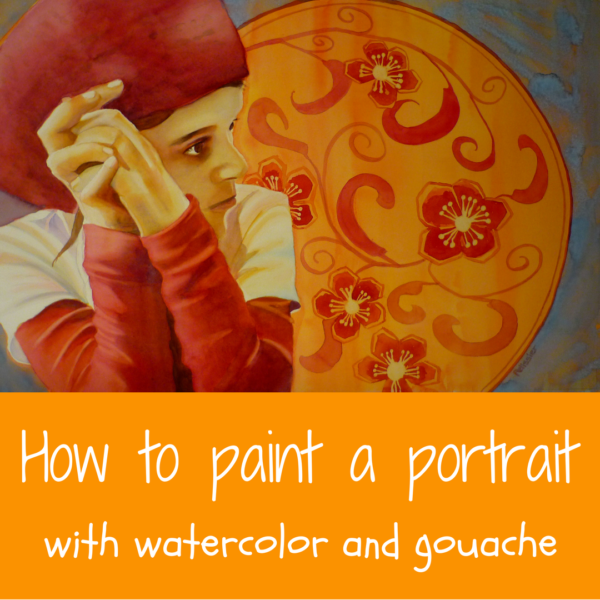
Step by step Watercolor Portrait painting tutorial : Vermilion
This is a mixed media painting, I used once again one of my kids as a model (they seem to enjoy the process 🙂 )
The figure is done with my usual layering ,then I used watercolors on the background and a tiny bit of gouache.
Vermilion is a naturally occurring pink-orange pigment also known as china red, because it was mined in China, I thought it was appropriate for this painting.
The paper is Arches hot press 140 lb which I am getting quite found of.
Step by step Watercolor Portrait painting tutorial : Vermilion
Here are a few pictures of the process.
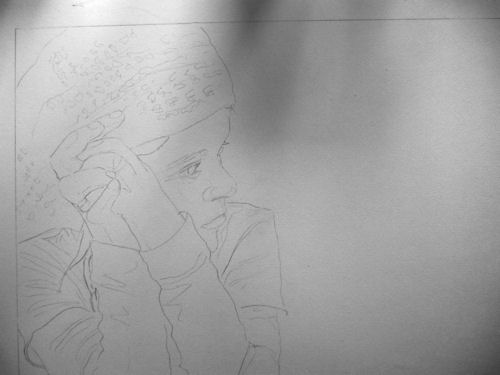
My drawing on paper, basically just an outline of the most important shapes.
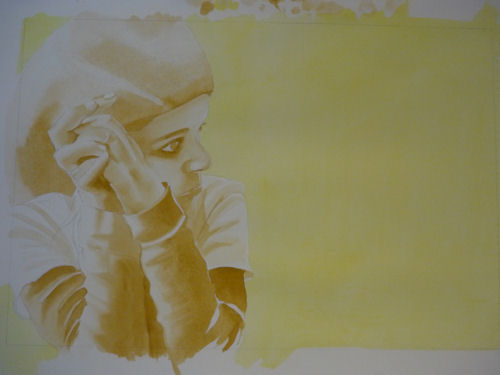
First yellow layer, I used yellow Ocher and Lemon yellow.
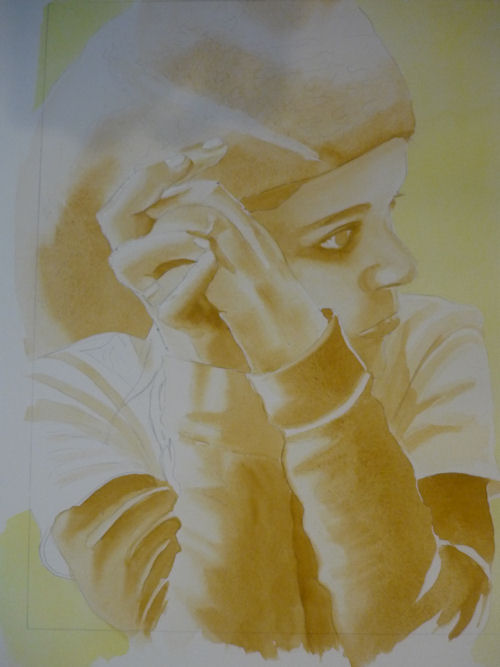
Detail of the face
I am a Blick Art Materials affiliate and I receive a small compensation for sales. That does not effect in any way the cost of the purchaser’s order but it helps me keeping the content of this blog free.

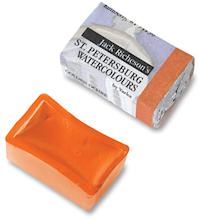 |
Yarka St. Petersburg Professional Watercolor PansSame palette of traditional colors the great masters used a century ago. Liquid-poured means semi-moist pans respond instantly to a wet brush. 24 pans in plastic case. Also individual pans. – Master Set |
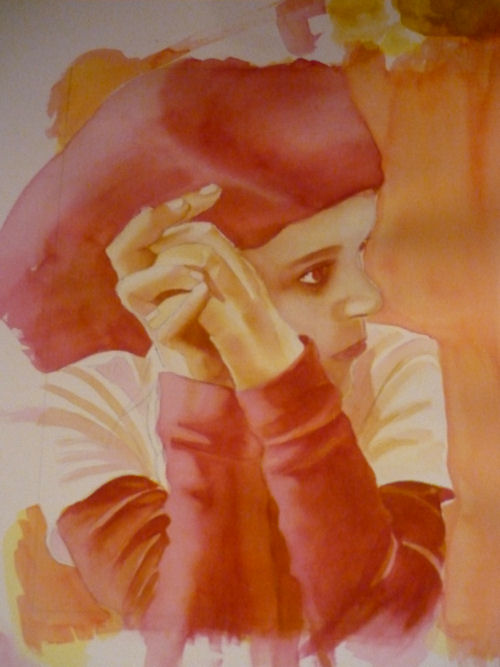
Here I am adding the reds, one alizarin crimson and one medium red. For the blue and red colors I am working with 2 hues, one cold one and one warm one
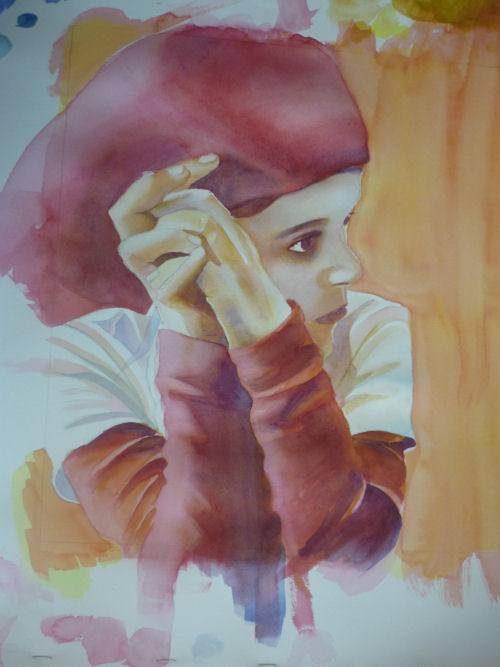
Adding some blues, detail of the face
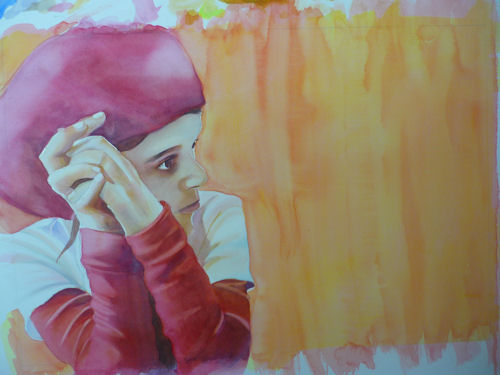
I used only yellow and red on the background, I am going to make the round shape in the background by painting around it with gouache mixed with blue watercolor.
I am a Blick Art Materials affiliate and I receive a small compensation for sales. That does not effect in any way the cost of the purchaser’s order but it helps me keeping the content of this blog free.

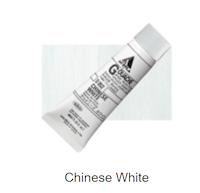 |
Holbein Acryla Gouache, 152 Chinese White, 20 mlAcryla Designer Gouache is a fast-drying, opaque acrylic based watercolor paint. It’s water soluble while wet, and water-resistant, matte and opaque, even over dark surfaces. Great for grounds and layering. |
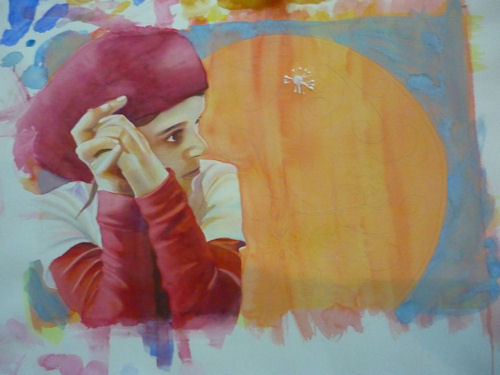
Painting the round shape negatively.
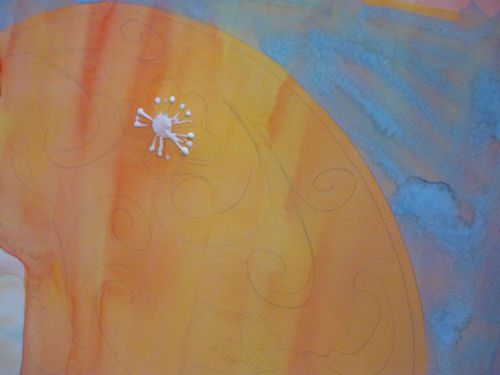
I use some liquid mask for the center of the flowers.
I am a Blick Art Materials affiliate and I receive a small compensation for sales. That does not effect in any way the cost of the purchaser’s order but it helps me keeping the content of this blog free.

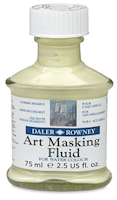 |
Daler-Rowney Masking FluidThis fluid is used to create striking white highlights or to mask areas for overpainting at a later stage. It forms a fast-drying, water-resistant film on watercolor paper and board, and is easily removed when dry. |
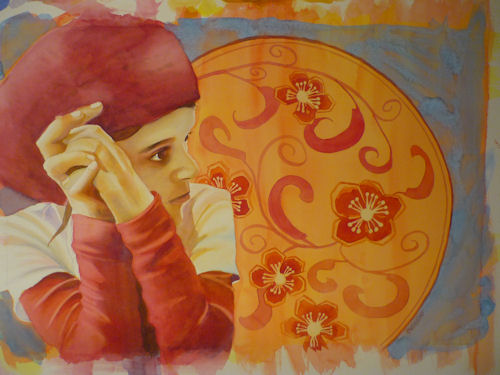
The finished painting, Vermillion


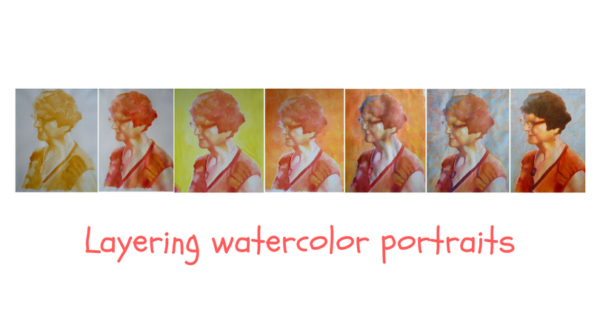
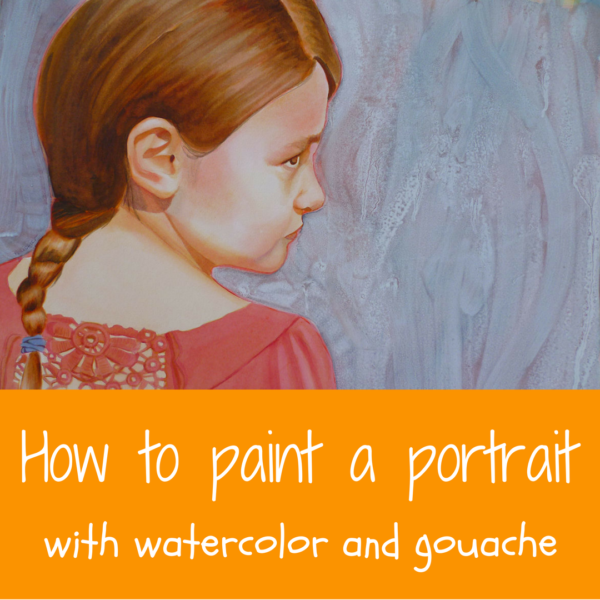
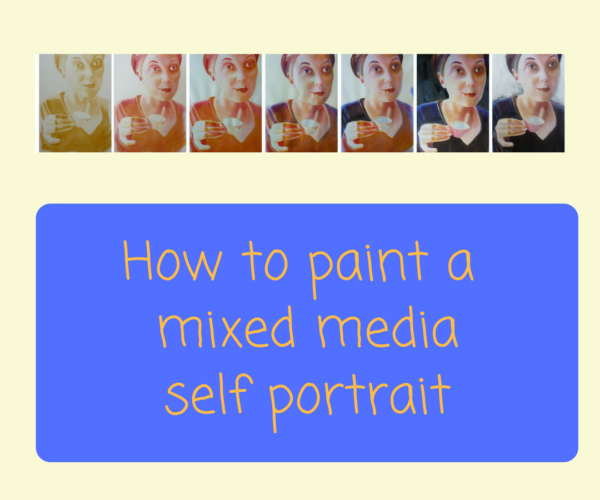


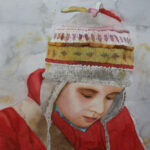
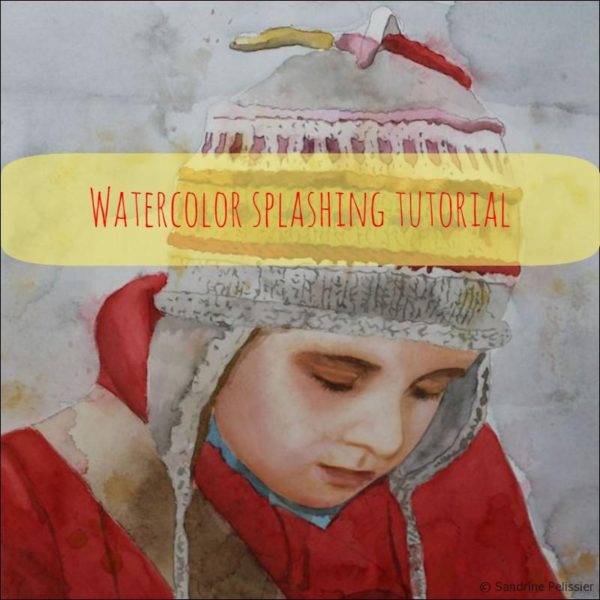
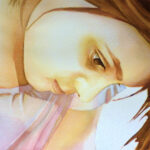

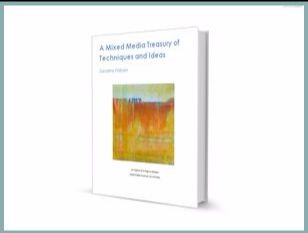

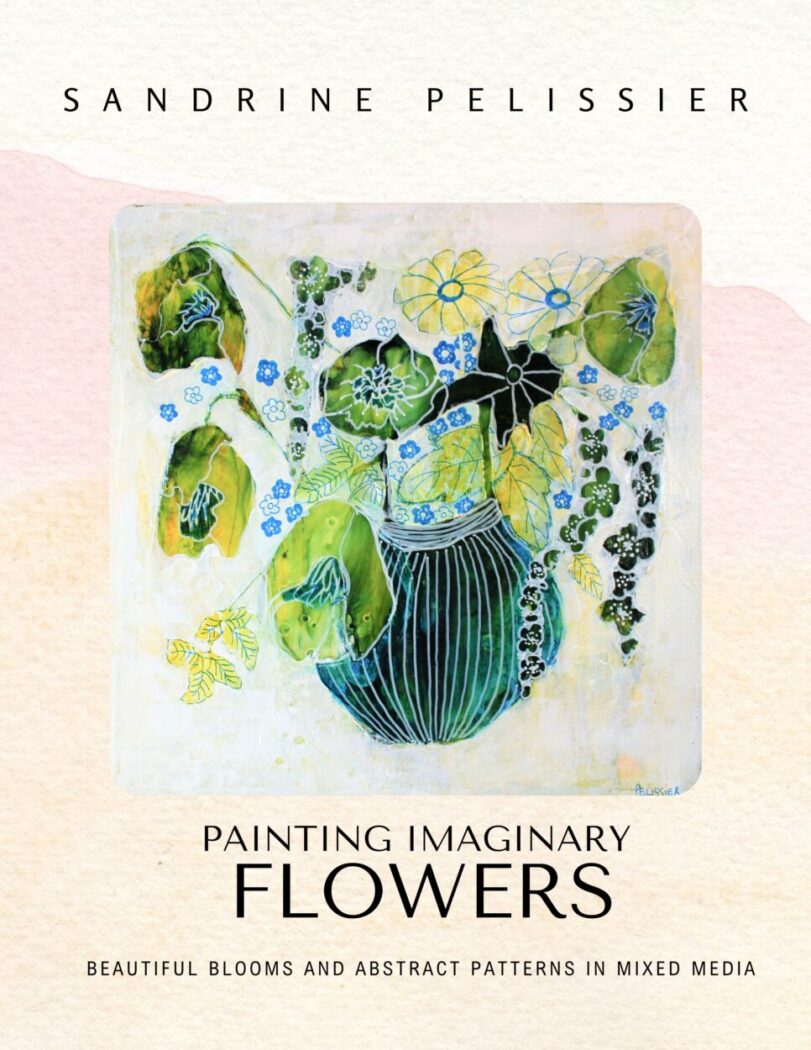
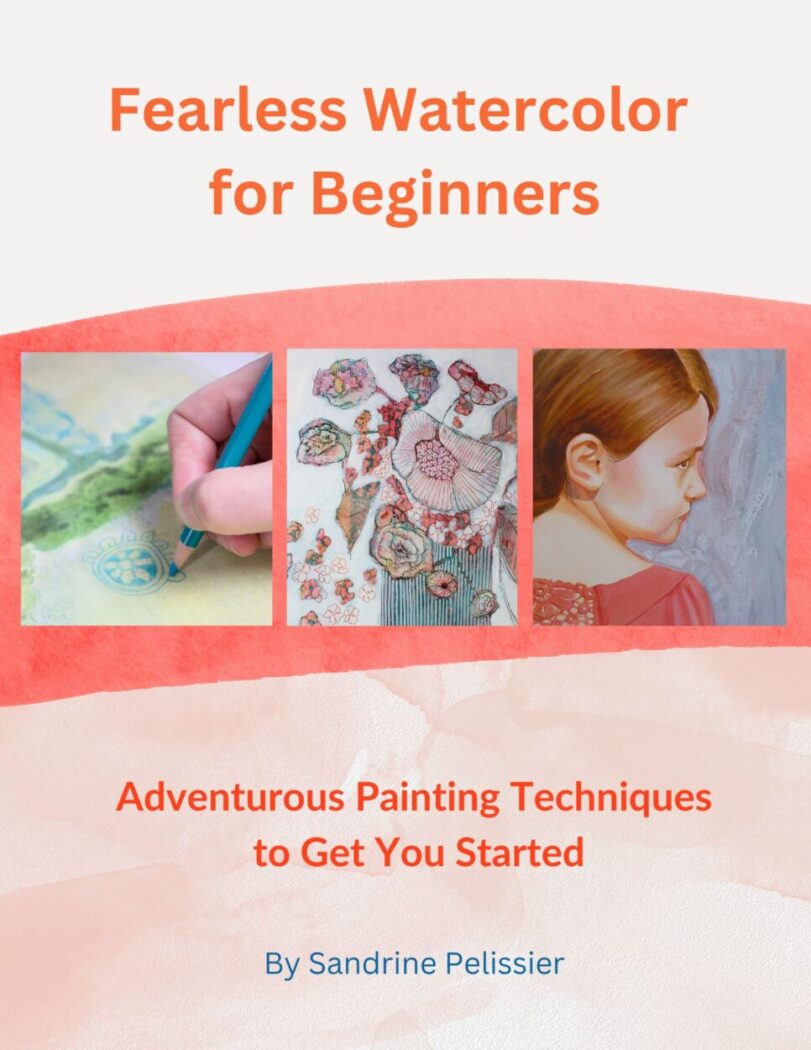

Comments (12)
Grace Brook
Not only are you amazing at your accurate drawing but the shading…..it gives incredible depth. How long would you say it took you to do that drawing? Did your daughter sit the entire time you drew her or did you take a photo? It’s absolutely gorgeous Sandrine. I wish I had the patience to learn to draw. I get so frustrated I find it hard to continue.
Sandrine
Thanks Grace, I am happy to hear you liked the painting. I worked from a reference picture because my kids would not stop moving 🙂
And yes, I think the drawing is probably the most important step in all the process because if you make mistakes there, they will be difficult to fix. I often use a grid system for realistoc portraits : https://paintingdemos.com/scaling-your-drawing-the-grid-method/ For some complicated drawings I also made a light box system: https://paintingdemos.com/how-to-make-your-own-lightbox-for-tracing-on-watercolor-paper/
Susanne
Absolutely gorgeous and very striking painting!
vandana
hi is this handmade ? Now a day you get so many software that i m not sure whom to admire.If its done hand ,I am a fan 🙂 .Even with computers i would a fan 🙂
Sandrine Pelissier
Hello Vandana, Yes this is handmade .
I am using the computer before painting to select pictures and crop them. It is a great tool to prepare before painting.But after that, all the painting is done by hand.
Thanks for visiting my blog 🙂
Holly Herick Design
This is wonderful to see the process. I can hardly believe how you separate the colors. It is like four color printing. I will keep an eye on your blog, I have so much to learn.
Sandrine Pelissier
Thanks Holly, The process makes me think about color printing as well:-) The quality of the colors obtained this way is different than if you were painting directly with the final color, more luminous.
Alonso
This is so good love it man your talented 🙂 I will be back for more 🙂
Portrait and Sandrine Pelissier’s Blog « Leslie White
[…] following steps are not of my design but shown to me on Sandrine Pellisier’s Blog post here. If you have not visited her blog, you may wish to take in some of her posts. She uses many […]
lesliepaints
Hi Sandrine. In the yellow layer, did you use the yellow ochre to create the darker yellow and apply it over the lemon yellow? I am thinking that sets the values like a value study for your later layers? Also, do you use hot press paper for these? I would like to try this sometime. Beautiful painting.
Sandrine Pelissier
Hello Leslie,
For this one I use only yellow ocher for the figure, with different concentrations, and medium yellow in the background. For the skin tones I now paint almost everything with yellow ocher except if I have an area that is brighter .
Like here in the painting “profile portrait of Sophie” I used some Lemon yellow on top of the eye.
http://www.watercolorpainting.ca/profileportraitofsophie2yellows.jpg
You can see the difference on the finished painting:
http://www.watercolorpainting.ca/step5.jpg
But mostly , my faces are painted with yellow ocher. In my older watercolor portraits I was using a medium yellow , you can see it on this example.
http://www.watercolorpainting.ca/20080620_15.jpg
http://www.watercolorpainting.ca/Pelissier,Sandrine-Uncomicstrip.jpg
But now I found Ocher to give me a more natural skin tone.
This is Arches hot press. I am getting quite found of this type of paper because it allows me to be more precise and I like the way the watercolor will dry on it.
lesliepaints
Thank-you, so much, Sandrine. I think I have a few students who would like to learn this layering approach. I think I understand from this reply and the other tutelage you gave earlier with this process.
I think you are right about hot press.